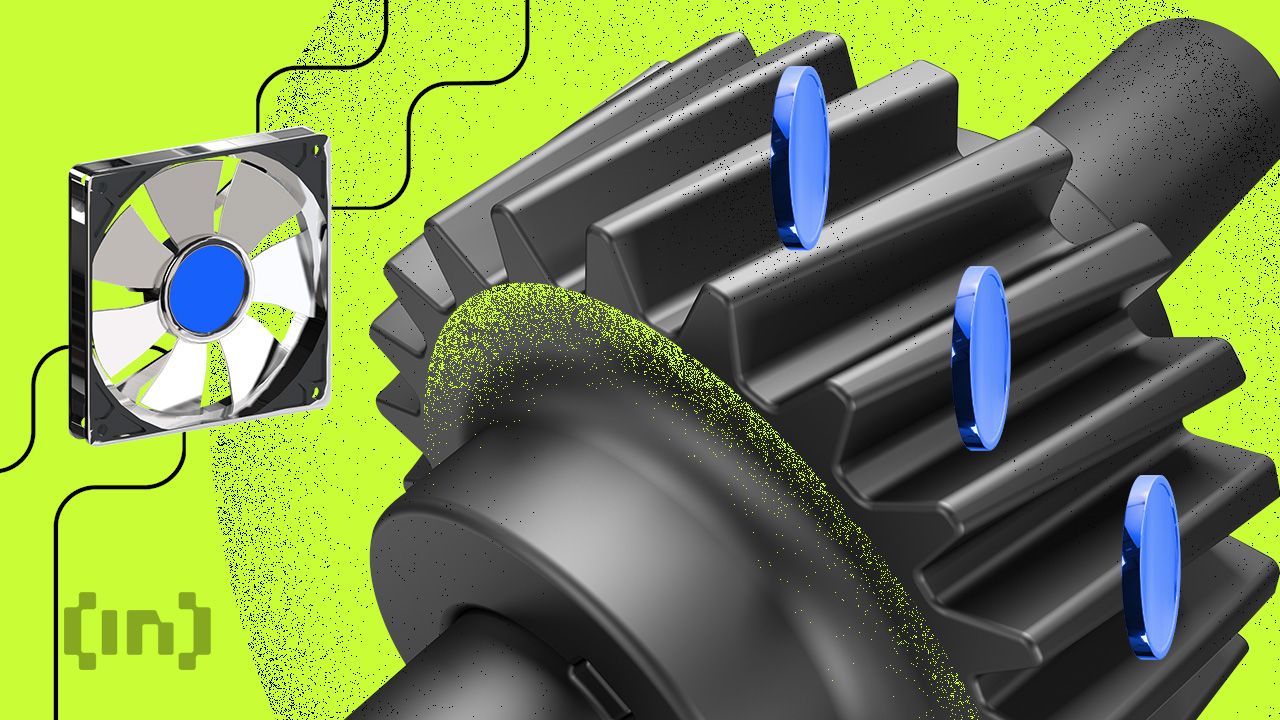Mining algorithms can be confusing, especially in proof-of-work cryptocurrencies. Without understanding them, it’s easy to make mistakes when comparing hashrates or mining setups, leading to poor decisions. This guide will explain mining algorithms, why there are different ones, and how to navigate them for better mining results.
KEY TAKEAWAYS
➤ Mining algorithms vary based on hardware compatibility, security, and customization needs.
➤ Different mining algorithms require different levels of computational power and memory, making direct hashrate comparisons difficult.
➤ Mining algorithms directly impact a project’s security, scalability, and decentralization.
Understanding mining algorithms

To successfully unlock a block on the blockchain, miners must find a mathematical solution (hash) that meets the network’s difficulty level. A mining algorithm encompasses a set of rules and mathematical operations miners deploy during the hashing process within proof-of-work cryptocurrencies.
Miners continuously try random nonces (single-use numbers) in the hash function to find a valid solution. Depending on the algorithm, miners can compute trillions of hashes per second, measured as TH/s. Each mining algorithm may influence the speed and efficiency of this process based on its complexity and requirements.
The significance of diverse mining algorithms
Anyone familiar with mining software like NiceHash Miner, LolMiner, or NanoMiner knows the variety of mining algorithms available. Each algorithm has unique characteristics tailored to specific needs.
This variety exists for several reasons, including hardware compatibility (some algorithms work better on specific GPUs or ASICs), project security (certain algorithms are more resistant to attacks), and customization for energy efficiency or decentralization.
Did you know? Different algorithms may target varying levels of decentralization or environmental impact, influencing energy consumption and mining accessibility.
Hardware compatibility
Certain mining algorithms are tailored for particular hardware types, such as CPUs, GPUs, or ASICs (Application-Specific Integrated Circuits). This design consideration is intentional and allows developers to exert influence over network decentralization and security. For instance, ASIC-resistant algorithms promote decentralization by thwarting the potential monopoly of specialized hardware in the mining process.
Take the evolution of the SHA-256 algorithm: initially suited for CPU mining, it later transitioned to GPUs and then ASICs as more powerful hardware emerged.
Fact check: Other algorithms, like Scrypt, focus on GPU compatibility to limit the impact of ASIC dominance, keeping mining more accessible to everyday users.
Project security
A unique mining algorithm can enhance security by preventing pre-existing mining advantages. For example, Monero regularly forks its algorithm to prevent ASICs from dominating the network. This adaptive approach keeps the network decentralized and fair.
On the other hand, sharing an algorithm between projects enables merged mining. For instance, Litecoin and Dogecoin both use the Scrypt algorithm, allowing miners to secure both networks without losing efficiency. This approach strengthens both blockchains, especially when mining rewards decline.
Customization
Developers can modify mining algorithms to achieve specific goals, such as improving energy efficiency or increasing memory requirements over time.
Did you know? RandomX algorithm used by Monero was optimized for CPUs, prioritizing memory-intensive tasks to resist GPU and ASIC dominance.
Adjusting variables like memory usage and power consumption can align the mining process with a project’s objectives.
SponsoredIllustrating various mining algorithms

To provide further clarity, here are some examples of popular mining algorithm and their distinctive attributes:
SHA-256: Used by Bitcoin and others, it began with CPU mining but shifted to GPUs and ASICs. It is known for its security and widespread adoption.
Scrypt: Initially resistant to ASIC mining due to its memory-intensive nature, Scrypt is used by Litecoin and Dogecoin. It’s less power-hungry and often results in lower transaction fees than SHA-256.
Ethash: Previously, Ethereum’s algorithm, Ethash resisted ASICs by focusing on memory bandwidth rather than CPU power, making it popular among GPU miners.
Equihash: Used by Zcash, it relies on memory-intensive proof-of-work, making ASIC mining inefficient. It also requires less computing power while maintaining security.
Comparing hashrates across algorithms is problematic
Hashrates vary significantly between mining algorithms due to their different computational requirements. For instance, an NVIDIA RTX 3090 may deliver 52 MH/s on KawPoW but 1 GH/s on KHeavyHash. This discrepancy highlights how each algorithm demands different levels of power and memory.
Sponsored SponsoredHardware optimized for one algorithm may perform poorly on another. For example, an ASIC miner designed for SHA-256 would be ineffective on a Scrypt-based network. Additionally, overclock settings that work for one algorithm may not suit another, leading to overheating or increased power usage.
Moreover, different algorithms consume varying amounts of power and produce different levels of heat, which affects hardware longevity and efficiency.
Different projects will have different hashrates
Different mining algorithms highlight the adaptability of the crypto space. Each has its own advantages and limitations, influencing decentralization, scalability, and security. Understanding these differences is crucial for anyone involved in mining. Projects choose algorithms based on their goals, which can impact hashrates, adoption, and even price.
Automated solutions like NiceHash simplify the mining process, offering an accessible entry point for beginners while exposing them to a variety of mining algorithms and the broader hashrate marketplace.
Frequently asked questions
What is the primary purpose of mining algorithms in cryptocurrencies?
Why do different cryptocurrencies employ various mining algorithms?
How do mining algorithms impact hardware performance and settings?
Can a mining algorithm have an impact on the adoption and price of a coin?
About the author

Joe Downie is CMO at NiceHash, a global hashrate marketplace. He has extensive knowledge in the field of cryptocurrency mining and blockchain technology. He writes for many crypto and mainstream outlets, providing industry insight and thought leadership into the fascinating world of this emerging technology.

